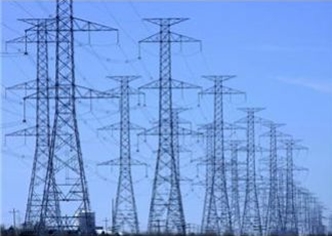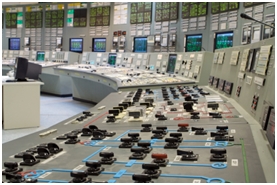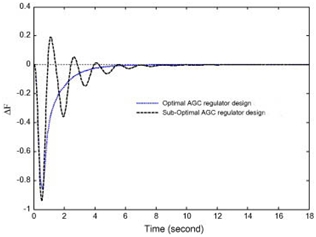Foreword
The main purpose of an electrical power system is to produce, transmit, control and assimilate the power. One of the main components of this system includes generators. When a generator is connected to a turbine, it is able to produce electrical energy. The principle conversion is from mechanical to electrical.
The power systems can be connected in either radial or interconnected manner. The interconnected model is the most used one with tie-line being used for power transfer. This model has the advantage of emergency supply and also the economic usage of the system.
The control of power system is quite necessary and is accomplished using small control areas. An important setup in this regard is that of Energy Control Centre (ECC) and it monitors whether the generation is per schedule or not.
The Need
As our development has increased, there has been a higher demand of electrical power loads both on industrial and domestic scale. As the number increases, it is also imperative to manage load properly since a failure to do so results in frequency fluctuation and voltage drops.
An effective regulatory strategy is available in the form of Automatic Generation Control (AGC) and Automatic Voltage Regulator Systems (AVR). The main function of AGC system is to assess and rectify the power and frequency while that of AVR system is to regulate voltage and reactive power.
Main Techniques
The need for an AGC design for a single unit and the interconnected model is quite imperative. A number of approaches are available in this regard and the main ones are:
- Energy storage system (Applicable in the case of pumped storage systems, battery system and so on)
- Control Strategy (Regulates the better dynamic response)
The hardware implementation of these strategies is through Proportional Integral (PI) controllers and through the intelligent controllers that use smart algorithms such as Fuzzy Logic, Artificial Neural Networks.
PI Controllers
The main role of PI controllers in AGC is to actuate the load reference point till the frequency deviation is equal to zero and the real power is at the predetermined value.
The controller’s main parts include: Proportional (reduction of overshoot) and Integral (steady state error minimization).
Fuzzy Logic Controller
This controller is regarded as an expert system and also a substitute to PI controllers of the past. Their competitive edge lies in the aspect that they have a better dynamic regulatory response for AGC. This software is a result of human intuition and thus is able to act in an intelligent manner.
Generation Control: Objectives and Implementation
The three main objectives of Automatic Generation Control (AGC) include:
- Sustaining frequency as close to nominal as possible to the specified range
- Maintenance of appropriate level of interchange power
- Maintenance of economic unit’s generation
The main route of implementation of the AGC involves usage of a central location. The premise is to telemeter the information from that central location. The regulation is done digitally and the same telemetry channels are used for transmission.
The necessary information can include:
- Unit megawatt output for all committed units
- Megawatt flow (neighboring systems)
- System frequency
This being described, it is also imperative to know what criteria’s would constitute a good AGC system:
- The ACE signal must be kept in check from becoming too large. The load variation has a direct effect on the ACE and thus the standard deviation values should be minimal.
- There should be no drifting of the ACE. This is important because if the drifting occurs then we can have the issue of inadvertent interchange errors. By a minimal drift, the meaning being implied is that the integral of Ace should be small.
- The control action values of AGC should be small and kept that way. For instance, you can have random load changes which shouldn’t cause control action. The objective is also to be able to monitor intelligently. In this way, the system is able to regulate those events/processes which are necessary rather than the random ones which have no effect.
Area Control Error
As discussed earlier in this post generation is controlled through different ECC’s. The generation curve changes with the change in load in the specific area. In order to keep frequency within nominal range ACE regulates itself to a new value. Let us consider two area system connected through a tie line & ∆P12, ∆P21 represent power aberration for area 1 & area 2 respectively. The power interchange that will happen within two areas as a result of varying load would be according to the equations below:
ACE1= – ∆P12 – B1 ∆ω
ACE2= – ∆P21 – B2 ∆ω
B1 and B2 are frequency biasing factors and their values vary as a result of unit’s commitment.
One thing that should be kept in mind regarding the implementation is that of transmission. The AGC program should act upon all the generation units. In most AGC models used at control centers today, we have transmission of varied pulses to each unit. In sync with this, the control equipment is able to modify the load reference set point as per the pulse length. This pulse length is created using digital signals, and hence we have the usage of digital telemetry. Also, the overall scheme has to be designed in a manner where we can easily manage the entire operation economically. Now, we can take a look at a “good” AGC system.
Conclusion
The main context that has been discussed in this post relies on the brief intro of AGC and the basic modalities. The intention is to highlight the importance of AGC in the electrical system and how research is improving the status quo at all times. With the main mold set in, we can take a deeper analysis on the applications and also a pro-cons approach for different software’s. We would also be examining in future posts as how this system can be made more efficient in terms of reliability. Reliability is one of the most important parameters when it comes to the mass success of AGC in power systems however for large frequency deviations AGC system simply disconnects.
This article is a request from the community. Did you find it useful?



An excellent article, I was looking for this sort of article that could explain AGC from the base & move it up to the high level. Good work!
Can you also describe what other types of controllers are used for AGC system? I mean besides Fuzzy & PI AGC has many other control schemes. Can you write on those as well please?
I am a d.a.e engineer and i am very regular in my life i am a hard work
Also i have one more question Is there only one control center in every country? Are two or more control Centers possibles in any country? How does power interchange occurs between two different control centers?
Very useful article. Thank you very much.